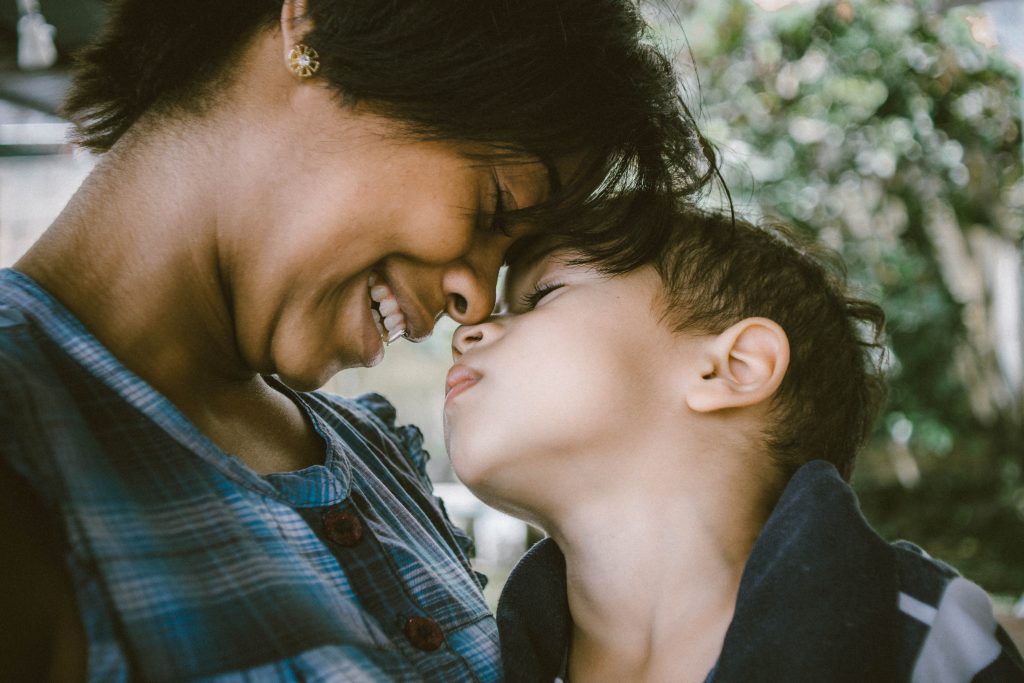
What is it:
Emotional self-regulation involves the ability to behave effectively and adaptively even when experiencing a range of emotions; it is the ability to respond socially appropriately to situations that are disappointing, annoying, frustrating, stressful, anxiety-provoking and so on.
Flexibility is the willingness to adapt to your environment by engaging in different behaviors when things in your environment change; coping with changes, being will to change, and thinking about things from a different perspective or outlook.
Why it’s important:
It is important for all parents to build up their emotional resilience; practicing flexibility and self-regulation will affect the whole tone of your relationship with your child. And this is especially important for parents with children with special needs; which sometimes requires super-human levels of patience and understanding.
It impossible to avoid stress, especially when you’re a parent. When you are under stress you will be quicker to fall into reactive responses – these are the knee jerk reactions that get us into trouble. These can create problematic patterns if we don’t learn how to cope with stress in adaptive ways. We are not at our best when we are stressed and explosive.
Finding ways to cope with stress and stay calm even in the challenging moments will benefit your relationship with your child and help create healthy patterns. When you fall into a pattern of reactivity it makes it difficult to respond appropriately to your child; and it makes it difficult for them to learn their own regulation skills.

Helping a child build self-regulation skills starts with a parents own ability to self-regulate.
It is important to find your own regulation strategies as a parent so that you can meet your child in the most difficult moments to help them learn the lifelong skill of dealing with frustration and coping with difficulties. It is important to know how to limit your negative reactions and model appropriate expressions of emotion. Teaching these skills must take place within the context of a trusting, loving relationship which is why nurturing your relationship is a top priority. Being warm and responsive to your child will have the biggest impact on helping them learn these social emotional skills; children will model their parent’s behaviors for better or worse.
How Parents can Practice Self-Regulation and Flexibility:
- Pay attention to your own patterns of responding
- What are the difficult moments for you?
- Notice what your knee-jerk reactions tend to be about
- Notice if you respond to the difficult moments with one of following: dismissing your child’s experience, trying to fix the problem, stopping or controlling them, lectures.
- What bodily sensations do you experience before responding reactively? E.g., increased heart rate, sweaty palms, tense shoulders.
- Simply noticing and paying attention to your experience can be very useful
- Practice a 5 second pause before responding under pressure
- A simple pause can make a huge difference
- Try a sensory activity to bring you back to the present moment:
- Notice your current experience with kindness and curiosity (i.e., mindfulness)
- Go for a walk
- Exercise
- Drink a warm drink
- Take a bath
- Listen to music
- Light a candle
- Notice what is behind the frustration
- Often times, if you look beneath the frustration, you see something you deeply value. E.g., you are frustrated about your children fighting with each other because you value peace and respect within relationships.
- Can you keep that value in mind while you respond?
- Notice your thought patterns
- Are you getting hooked by negative self-talk, criticism or rigid stories about your circumstance?
- Can you practice being the observer to those thoughts rather than getting swept away by them?
- Try practicing cognitive defusion and seeing thoughts for what they are; not for what they say. Your thoughts, judgments or mistakes don’t define you; and they don’t have to control your behaviors. Thoughts and feelings are always changing; just like the weather they never stay the same all the time.
- Make self-care a priority
- Self-care can be the most important prevention for reactivity; schedule it into your life on a regular basis.
- Are you taking care of your physical, emotional and relational needs?
- Find what works for you: what do you need today?
- Plan ahead
- Identify the most difficult situations and plan for those: what alternative behaviors can you engage in instead of ____ (reactive response).
- Make it easier for yourself to engage in those behavior.
- E.g., schedule an extra 20 minutes into your morning routine so you won’t feel rushed and resort to yelling.
- Have a new activity prepared to bring out as a distraction when the kids start fighting.

How to Teach Self-Regulation and Flexibility to your Child:
- Start by connecting with your child
- Emotional regulation skills must be learned within the safety of a warm and loving relationship
- Model the behaviors you want to see
- Get comfortable talking about emotions and practicing emotional coaching
- If your child needs to work on being flexible when they can’t watch their favorite movie then demonstrate that skill when you are faced with the same challenge.
- Your ability to regulate and respond flexibly will have the biggest influences to your child’s ability to learn those same skills.
- Demonstrate to your child how you identify your own feelings (good and bad) when they come up; show them how you utilize your own coping strategies when you are distressed.
- Identify different situations that are especially difficult for your child
- What time of the day are they most likely to struggle?
- What activities are most difficult for them?
- Who are they around when they face the challenging moments?
- Talk with your child about these situations and what is difficult about them and how you can plan ahead to avoid some of the struggle. I.e., collaborative problem solving
- Practice alternative responses with your child
- Role play, pretend play and acting things out (BST) can be a really powerful teaching tool. Create a hypothetical scenario and practice an appropriate response. E.g., you’re playing a game with your friend and you lose the game at the last minute; practicing taking a deep breath and saying “good game, maybe I’ll win next time.”
- These skills take a lot of practice and repetition; you may need to contrive opportunities to practice these scenarios many times.
- Try to keep it interesting and fun; and practice when your child is in a calm and happy mood.
- Practice coping and calming strategies
- There are a variety of activities that can help calm a child; the key is to find a couple that work for your child. Test some of these out and identify what your child likes.
- Strategies to try out: counting breaths, positive self-talk, asking for help or a break, talking about how you feel, coming up with compromise or plan b, thinking about something that makes you happy, exercise, play with a fidget, fresh air, petting your dog/cat, making something, playing a game, holding a special blanket or stuffed animal, having a warm drink, taking a bath, playing with water, drawing, writing in a journal, weighted blanket, music, hug or cuddle.
- Make it easier to utilize these strategies within your environment: consider making a ‘calm down corner’ or ‘calm down box’ with items to help aid in calming (fidgets, sensory toys, blanket).
- Use visuals to teach the difference between Flexible vs Rigid
- Talk to your child about what it means to be flexible and what it means to be rigid; use a visual to explain this such as a pipe cleaner vs. a pencil. If you bend a pipe cleaner it won’t break, but if you bend a pencil it will break.
- We want to practice flexibility so that we won’t break under pressure and so that we can bend and adapt to changes around us.
- Discuss real life examples of when each of you responded with flexibility and rigidity.
- Use books, movies and media to practice emotional identification and social skills
- Practice labeling emotions and reactions of characters in books and movies.
- Press pause and ask your child, how does that character feel? What would you do in that situation?
- This also helps to build perspective taking skills which are vital to social interactions.
Learning and practicing self-regulation and flexibility is a life long journey and your child is at the very beginning. Your child’s ability to self-regulate is not a reflection of their love for you; if they are having intense melt-downs please do not take it personally. Remember that it takes time to develop these skills, both for parents and children. Do your best to show up with patience and understanding, knowing that you are both learning and growing in this area.
